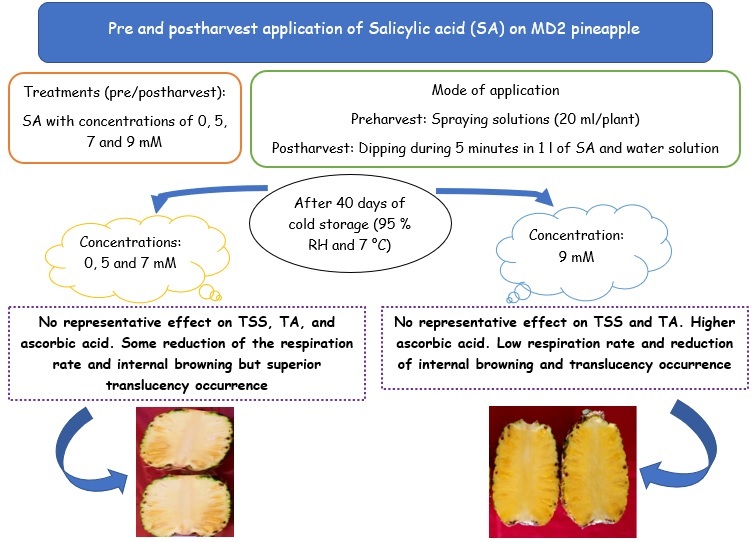
Published 2023-03-09
Keywords
- Antioxidant,
- browning,
- concentration,
- enzyme,
- translucency
How to Cite
Copyright (c) 2023 Condro Wibowo, Diego Mauricio Cano-Reinoso

This work is licensed under a Creative Commons Attribution 4.0 International License.
Abstract
Salicylic acid (SA) is a natural plant compound that has been proven to enhance the quality of fruits; therefore, its impact on pineapple should be further studied, especially in the most marketable hybrids. This study aimed to evaluate the effect of SA treatments on MD2 pineapple quality. The experiment consisted of two parts with applications pre and postharvest following the next treatments, control: No use of SA, and 5, 7 and 9 mM of SA. The total soluble solids, total acidity, ascorbic acid content, respiration rate, together with the severity and incidence of internal browning and flesh translucency were determined, after 40 days of cold storage. The treatment using 9 mM of SA in pre and postharvest delivered the best results, having the most elevated ascorbic acid (526.75 mg kg-1) and total acidity (0.8%), the lowest severity and incidence outcomes of internal browning and flesh translucency (0% in both cases), with the most reduced respiration rate values during postharvest. In conclusion, SA treatments with concentrations of 9 mM applied in pre and postharvest on MD2 pineapple can improve its quality after 40 days of cold storage.





